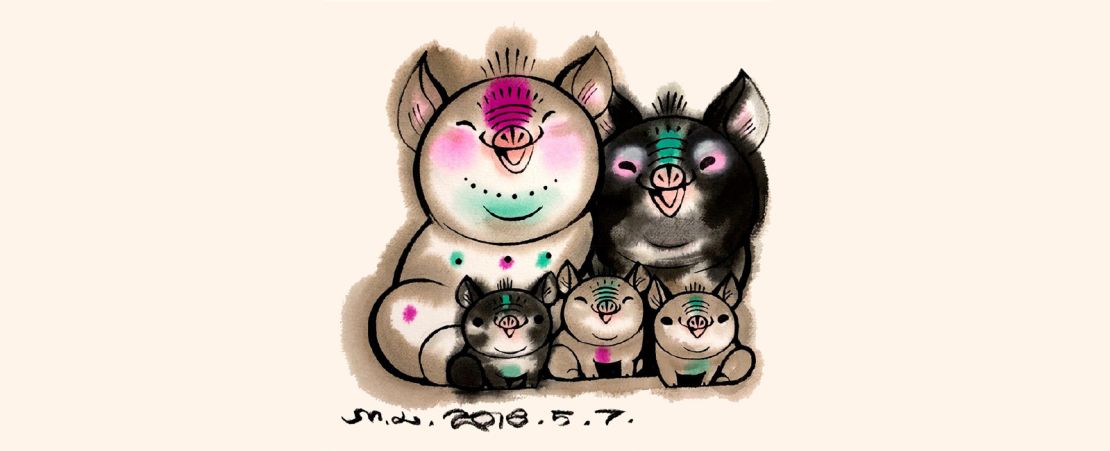China appears to be backpedaling on its decades-long policies to limit population growth as it attempts to address a demographic time bomb.
The one child policy ran until 2015 when it was partially relaxed to allow some couples to have two children, but families have been slow to embrace official approval to expand.
An op-ed in a state-run newspaper titled “Giving birth is a family matter and a national issue too” is the latest to encourage couples to have more children, and call for official action to enable young people to start families.
The full-page column was published in the overseas edition of the People’s Daily, mouthpiece of the Chinese Communist Party. It warned that “the impact of low birth rates on the economy and society has begun to show.”
The piece has attracted millions of comments online, and comes as the government revealed a new official postage stamp, which seems to hint that it may drop the remaining restrictions on the number of children people can have.

The stamp, issued this week to mark the upcoming Year of the Pig, shows two parents with three piglets. A similar commemorative stamp released to mark the Year of the Monkey in 2016 showed two baby monkeys, which was seen as a nod to the dropping of the one child policy.

One child not enough
Beijing reversed its hugely controversial one child policy – in which women were subject to forced abortions, heavy fines, and eviction if they attempted to have a second baby – as demographic issues caused by the lack of children became increasingly apparent.
China’s pool of workers is shrinking, with many young people supporting their parents and two sets of grandparents, in a country where social services for the elderly are still lacking. In 2017, the country’s total fertility rate was 1.6 children per woman, well below the 2.1 rate estimated to be necessary to keep the population steady.
Simply reversing the policy has not been effective, as China’s urban middle class settle into a low birth rate more in common with western countries, one that has been compounded by economic pressures.
“Especially in cities, the cost of having children is getting higher and higher. From birth to school, economic costs and time costs are rising,” said the People’s Daily opinion piece. “Many young people living in cities are not willing to have children.”
The author of the piece, Zhang Yiqi, said that government action – like providing educational and medical care – was needed to encourage more people to have children: “In the face of low fertility, the government should take more targeted measures to solve it and satisfy people’s yearning for and pursuit of a better life.”
The op-ed attracted a massive response online, with a hashtag related to it garnering millions of views on Weibo, China’s tightly controlled equivalent to Twitter.
Comments critical of the government are often deleted on Weibo, and it is unclear how much censorship may have taken place around this issue. Most of the visible posts using the hashtag were supportive of Zhang’s suggestions, and the need for government action to support couples to have more children.
Societal pressure
The People’s Daily op-ed is only the latest sign that China’s leaders are preparing for a full shift away from family planning, or even towards encouraging more births, as allowing women to have two children instead of one has not had the desired demographic effect.
The issuance of the pig family stamp, while subtle, is “a clear sign that they are going to abandon all birth restrictions,” Yi Fuxian, a scientist at the University of Wisconsin-Madison, told the Wall Street Journal.
Last month, China’s top court began considering introducing a three month “calm-down period” for divorcing couples, to give them a chance to reconsider their decisions. Provincial governments have also offered cash subsidies to couples who get married.
However, many fear that a push towards having more children will negatively affect women, who bore the brunt of the draconian one child policy.
Women already face significant difficulties in applying for jobs, despite labor laws and regulations prohibiting gender discrimination in employment. A survey by job search website 51job.com last year found that 75% of companies had become more reluctant to hire women in the wake of the relaxed, two child policy.
“The gender gap in labor force participation has also grown,” advocacy group Human Rights Watch (HRW) said in a report earlier this year.
“While the women’s labor force participation rate was 83% in 2007, it had dropped to 81% of the male rate by 2017. The pay gap in urban areas has also increased.”
It pointed out that many advertisements ruled out women who had not already had children, an apparent attempt to avoid paying for maternity costs.
The consequences of relaxing the one child policy, HRW predicted, “could further worsen gender discrimination” in hiring.
“Employers may be even less willing to hire women without children based on the assumption that they now could take two maternity leaves during the course of their employment.”








